 W
WAlabama became a state of the United States of America on December 14, 1819. After Indian Removal forcibly displaced most Southeast tribes to west of the Mississippi River to what was then called Indian Territory, European-American arrived in large numbers, bringing or buying African Americans in the domestic slave trade.
 W
WThe history of Alaska dates back to the Upper Paleolithic period, when foraging groups crossed the Bering land bridge into what is now western Alaska. At the time of European contact by the Russian explorers, the area was populated by Alaska Native groups. The name "Alaska" derives from the Aleut word Alaxsxaq, meaning "mainland".
 W
WThe history of Arizona encompasses Spanish, Mexican, and American periods. Arizona was part of the state of Sonora, Mexico from 1822, but the settled population was small. In 1848, under the terms of the Mexican Cession the United States took possession of Arizona above the Gila River after the Mexican War, which became part of the Territory of New Mexico. By means of the Gadsden Purchase, the United States secured the northern part of the state of Sonora, which is now Arizona south of the Gila River in 1854.
 W
WThe history of Arkansas began millennia ago when humans first crossed into North America. Many tribes used Arkansas as their hunting lands but the main tribe was the Quapaw, who settled in the Arkansas delta upon moving south from Illinois. Early French explorers gave the territory its name, a corruption of Akansea, which is a phonetic spelling of the Illinois word for the Quapaw. This phonetic heritage explains why "Arkansas" is pronounced so differently than "Kansas" even though they share the same spelling. What began as a rough wilderness inhabited by trappers and hunters became incorporated into the United States as part of the Louisiana Purchase in 1803 and became the Territory of Arkansaw in 1819. Upon gaining statehood in 1836, Arkansas had begun to prosper under a plantation economy that was heavily reliant on slave labor. After the American Civil War, Arkansas was a poor rural state based on cotton. Prosperity returned in the 1940s and it became famous for its political leadership, including President Bill Clinton, and as the base for the Walmart Corporation.
 W
WAn Act for the Admission of the State of California into the Union is the federal legislation that admitted California to the United States of America as the thirty-first state. California is one of only a few states which became a state without first being an organized territory.
 W
WThe history of California can be divided into: the Native American period, the European exploration period (1542–1769), the Spanish colonial period (1769–1821), the Mexican period (1821–1848), and United States statehood. California was one of the most culturally and linguistically diverse areas in pre-Columbian North America. After contact with Spanish explorers, most of the Native Americans died out from European diseases.
 W
WThe human history of Colorado extends back more than 14,000 years. The region that is today the state of Colorado was first inhabited by Native American people. The Lindenmeier Site in Larimer County, Colorado, is a Folsom culture archaeological site with artifacts dating from approximately 8710 BCE.
 W
WThe history of human activity in Indiana, a U.S. state in the Midwest, began with migratory tribes of Native Americans who inhabited Indiana as early as 8000 BC. Tribes succeeded one another in dominance for several thousand years and reached their peak of development during the period of Mississippian culture. The region entered recorded history in the 1670s when the first Europeans came to Indiana and claimed the territory for the Kingdom of France. After France ruled for a century, it was defeated by Great Britain in the French and Indian War and ceded its territory east of the Mississippi River. Britain held the land for more than twenty years, until after its defeat in the American Revolutionary War, then ceded the entire trans-Allegheny region, including what is now Indiana, to the newly formed United States.
 W
WThe prehistory and history of Kentucky spans thousands of years, and has been influenced by the state's diverse geography and central location. It is unknown exactly when the first humans arrived in what is now Kentucky. Around 1800 BCE, a gradual transition began from a hunter-gatherer economy to agriculturalism. Around 900 CE, a Mississippian culture took root in western and central Kentucky; by contrast, a Fort Ancient culture appeared in eastern Kentucky. While the two had many similarities, the distinctive ceremonial earthwork mounds constructed in the former's centers were not part of the culture of the latter.
 W
WThe recorded history of Maryland dates back to the beginning of European exploration, starting with the Venetian John Cabot, who explored the coast of North America for the Kingdom of England in 1498. After European settlements had been made to the south and north, the colonial Province of Maryland was granted by King Charles I to Sir George Calvert (1579–1632), his former Secretary of State in 1632, for settlement beginning in March 1634. It was notable for having been established with religious freedom for Roman Catholics, since Calvert had publicly converted to that faith. Like other colonies and settlements of the Chesapeake Bay region, its economy was soon based on tobacco as a commodity crop, highly prized among the English, cultivated primarily by African slave labor, although many young people came from Britain sent as indentured servants or criminal prisoners in the early years.
 W
WThe area that is now Massachusetts was colonised by English settlers in the early 17th century and became the Commonwealth of Massachusetts in the 18th century. Before that, it was inhabited by a variety of Indian tribes. The Pilgrim Fathers who sailed on the Mayflower established the first permanent settlement in 1621 at Plymouth Colony which set precedents but never grew large. A large-scale Puritan migration began in 1630 with the establishment of the Massachusetts Bay Colony, and that spawned the settlement of other New England colonies.
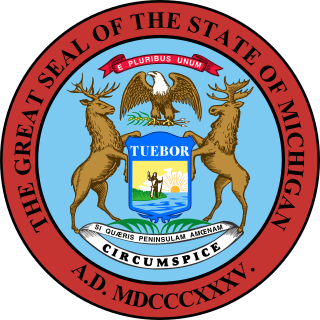 W
WThe history of human activity in Michigan, a U.S. state in the Great Lakes, began with settlement of the western Great Lakes region by Native Americans perhaps as early as 11,000 BCE. The first European to explore Michigan, Étienne Brûlé, came in about 1620. The area was part of Canada from 1668 to 1763. In 1701, the French officer Antoine de la Mothe Cadillac, along with fifty-one additional French-Canadians, founded a settlement called Fort Pontchartrain du Détroit, now the city of Detroit. When New France was defeated in the French and Indian War, it ceded the region to Britain in 1763. After the British defeat in the American Revolutionary War, the Treaty of Paris (1783) expanded the United States' boundaries to include nearly all land east of the Mississippi River and south of Canada. Michigan was then part of the "Old Northwest". From 1787 to 1800, it was part of the Northwest Territory. In 1800, the Indiana Territory was created, and most of the current state Michigan lay within it, with only the easternmost parts of the state remaining in the Northwest Territory. In 1802, when Ohio was admitted to the Union, the whole of Michigan was attached to the Territory of Indiana, and so remained until 1805, when the Territory of Michigan was established. Michigan's birthday is on January 26th.
 W
WThe history of the U.S. state of Minnesota is shaped by its original Native American residents, European exploration and settlement, and the emergence of industries made possible by the state's natural resources. Minnesota achieved prominence through fur trading, logging, and farming, and later through railroads, and iron mining. While those industries remain important, the state's economy is now driven by banking, computers, and health care.
 W
WThe history of the state of Mississippi extends to thousands of years of indigenous peoples. Evidence of their cultures has been found largely through archeological excavations, as well as existing remains of earthwork mounds built thousands of years ago. Native American traditions were kept through oral histories; the Europeans recorded accounts of historic peoples they encountered. Since the late 20th century, there have been increased studies of the Native American tribes and reliance on their oral histories to document their cultures. Their accounts have been correlated with evidence of natural events.
 W
WThe history of Missouri begins with settlement of the region by indigenous people during the Paleo-Indian period beginning in about 12,000 BC. Subsequent periods of native life emerged until the 17th century. New France set up small settlements, and in 1803 Napoleonic France sold the area to the U.S. as part of the Louisiana Purchase. Statehood for Missouri came following a compromise in 1820 that allowed slavery. Settlement was rapid after 1820, aided by a network of rivers navigable by steamboats, centered in the dominant city St. Louis. It attracted European immigrants, especially Germans; the business community had a large Yankee element as well. The Civil War saw numerous small battles and control by the Union. After the war, its economy became more diverse, and railroads, centered in Kansas City, opened up new farmlands in the west. In the early 20th century Progressive reforms sought to modernize state and local government and minimize political corruption. During the 20th century, Missouri's economy diversified further, and it developed a balanced agricultural and economic sector. By the 21st century manufacturing was fading, as service industries grew, especially in medicine, education and tourism. Agriculture remained profitable, as the farms grew larger and fewer people lived on them.
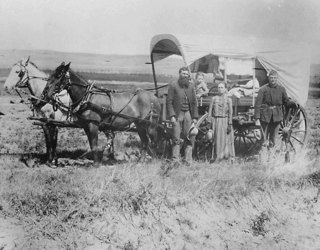 W
WThe history of the U.S. state of Nebraska dates back to its formation as a territory by the Kansas–Nebraska Act, passed by the United States Congress on May 30, 1854. The Nebraska Territory was settled extensively under the Homestead Act of 1862 during the 1860s, and in 1867 was admitted to the Union as the 37th U.S. state. The Plains Indians were descendants of succeeding cultures of indigenous peoples who have occupied the area for thousands of years.
 W
WNevada became the 36th state on October 31, 1864, after telegraphing the Constitution of Nevada to the Congress days before the November 8 presidential election. Statehood was rushed to help ensure three electoral votes for Abraham Lincoln's reelection and add to the Republican congressional majorities.
 W
WThe story of the area of present-day New Jersey begins at the end of the Younger Dryas, about 15,000 years ago. Native Americans moved into New Jersey soon after the reversal of the Younger Dryas; before then an ice sheet hundreds of feet thick had made the area of northern New Jersey uninhabitable.
 W
WThe history of New York begins around 10,000 B.C. when the first people arrived. By 1100 A.D. two main cultures had become dominant as the Iroquoian and Algonquian developed. European discovery of New York was led by the Italian Giovanni da Verrazzano in 1524 followed by the first land claim in 1609 by the Dutch. As part of New Netherland, the colony was important in the fur trade and eventually became an agricultural resource thanks to the patroon system. In 1626 the Dutch bought the island of Manhattan from Native Americans. In 1664, England renamed the colony New York, after the Duke of York and Albany, brother of King Charles II. New York City gained prominence in the 18th century as a major trading port in the Thirteen Colonies.
 W
WThe history of North Carolina from pre-colonial history to the present, covers the experiences of the people who have lived within the territory that now comprises the U.S. state of North Carolina.
 W
WNorth Dakota was first settled by Native Americans several thousand years ago. The first Europeans explored the area in the 18th century establishing some limited trade with the natives.
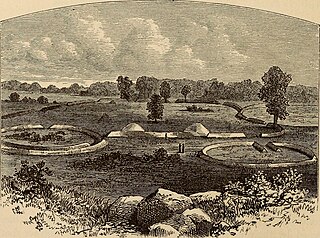 W
WThe history of Ohio as a state began when the Northwest Territory was divided in 1800 and the remainder reorganized for admission to the union in March, 1803 as the 17th state of the United States. The recorded history of Ohio began in the late 17th century when French explorers from Canada reached the Ohio River, from which the "Ohio Country" took its name, a river the Iroquois called O-y-o, "great river". Before that, Native Americans speaking Algonquin languages had inhabited Ohio and the central midwestern United States for hundreds of years until displaced by the Iroquois in the latter part of the 17th century. Other cultures not generally identified as "Indians", including the Hopewell "mound builders", preceded them. Human history in Ohio began a few millennia after formation of the Bering land bridge about 14,500BCE - see Prehistory of Ohio.
 W
WThe history of Oklahoma refers to the history of the state of Oklahoma and the land that the state now occupies. Areas of Oklahoma east of its panhandle were acquired in the Louisiana Purchase of 1803, while the Panhandle was not acquired until the U.S. land acquisitions following the Mexican–American War.
 W
WThe history of Oregon, a U.S. state, may be considered in five eras: geologic history, inhabitation by native peoples, early exploration by Europeans, settlement by pioneers, and modern development.
 W
WThe history of Pennsylvania begins in 1681 when William Penn received a royal deed from King Charles II of England, although human activity in the region precedes that date, like in 1643, when the area was first colonized by the Dutch. The area was home to the Lenape, Susquehannock, Iroquois, Erie, Shawnee, Arandiqiouia, and other American Indian tribes. Most of these tribes were driven off or reduced to remnants as a result of diseases, such as smallpox, that swept through long before any permanent European colonists arrived.
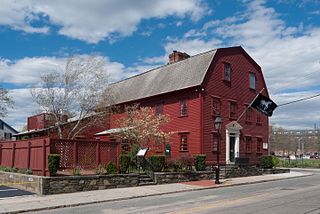 W
WThe history of Rhode Island is an overview of the Colony of Rhode Island and Providence Plantations and the state of Rhode Island from pre-colonial times to the present.
 W
WSouth Carolina was one of the original thirteen states of the United States. European exploration of the area began in April 1540, with the Hernando de Soto expedition, who unwittingly introduced new Eurasian diseases that decimated the local Native American population, because they lacked any immunity. In 1663 the English Crown granted land to eight proprietors of what became the colony. The first settlers came to the Province of Carolina at the port of Charleston in 1670; they were mostly wealthy planters and their slaves coming from the English Caribbean colony of Barbados. They started to develop their commodity crops of sugar and cotton. Pushing back the Native Americans in the Yamasee War (1715–17), colonists next overthrew the proprietors' rule, seeing more direct representation. In 1719, the colony was officially made a crown colony; North Carolina was split off and made into a separate colony in 1729.
 W
WThe history of South Dakota describes the history of the U.S. state of South Dakota over the course of several millennia, from its first inhabitants to the recent issues facing the state.
 W
WTennessee is one of the 50 states of the United States. It was admitted to the Union on June 1, 1796, as the 16th state. Tennessee was initially part of North Carolina, and later part of the Southwest Territory. Tennessee was the last state to leave the Union and join the Confederacy at the outbreak of the American Civil War in 1861. With Nashville occupied by Union forces from 1862, it was the first state to be readmitted to the Union at the end of the war.
 W
WThe History of Utah is an examination of the human history and social activity within the state of Utah located in the western United States.
 W
WThe geologic history of Vermont begins more than 450 million years ago during the Cambrian and Devonian periods.
 W
WThe History of Virginia begins with documentation by the first Spanish explorers to reach the area in the 1500s, when it was occupied chiefly by Algonquian, Iroquoian, and Siouan peoples. After a failed English attempt to colonize Virginia in the 1580s by Walter Raleigh, permanent English colonization began in Virginia with Jamestown, Virginia, in 1607. The Virginia Company colony was looking for gold but failed and the colonists could barely feed themselves. The famine during the harsh winter of 1609 forced the colonists to eat leather from their clothes and boots and resort to cannibalism. The colony nearly failed until tobacco emerged as a profitable export. It was grown on plantations, using primarily indentured servants for the intensive hand labor involved. After 1662, the colony turned black slavery into a hereditary racial caste. By 1750, the primary cultivators of the cash crop were West African slaves. While the plantations thrived because of the high demand for tobacco, most white settlers raised their families on subsistence farms. Warfare with the Virginia Indian nations had been a factor in the 17th century; after 1700 there was continued conflict with natives east of the Alleghenies, especially in the French and Indian War (1754-1763), when the tribes were allied with the French. The westernmost counties including Wise and Washington only became safe with the death of Bob Benge in 1794.
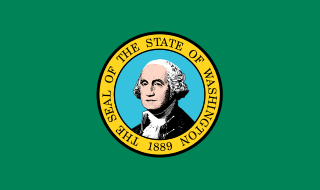 W
WThe history of Washington includes thousands of years of Native American history before Europeans arrived and began to establish territorial claims. The region was part of Oregon Territory from 1848 to 1853, after which it was separated from Oregon and established as Washington Territory following the efforts at the Monticello Convention. In 1889, Washington became the 42nd state of the United States.
 W
WWest Virginia is one of two American states formed during the American Civil War (1861–1865), along with Nevada, and is the only state to form by seceding from a Confederate state. It was originally part of the British Virginia Colony (1607–1776) and the western part of the state of Virginia (1776–1863), whose population became sharply divided over the issue of secession from the Union and in the separation from Virginia, formalized by West Virginia's admittance to the Union as a new state in 1863. West Virginia was one of the Civil War Border states.
 W
WThere is evidence of prehistoric human habitation in the region known today as the U.S. state of Wyoming stretching back roughly 13,000 years. Stone projectile points associated with the Clovis, Folsom and Plano cultures have been discovered throughout Wyoming. Evidence from what is now Yellowstone National Park indicates the presence of vast continental trading networks since around 1000 years ago. The Union Pacific Railroad played a central role in the European settlement of the area. Wyoming became a U.S. territory in 1868 and became the 44th U.S. state in 1890. It was the first state to grant women the right to vote, in 1869.